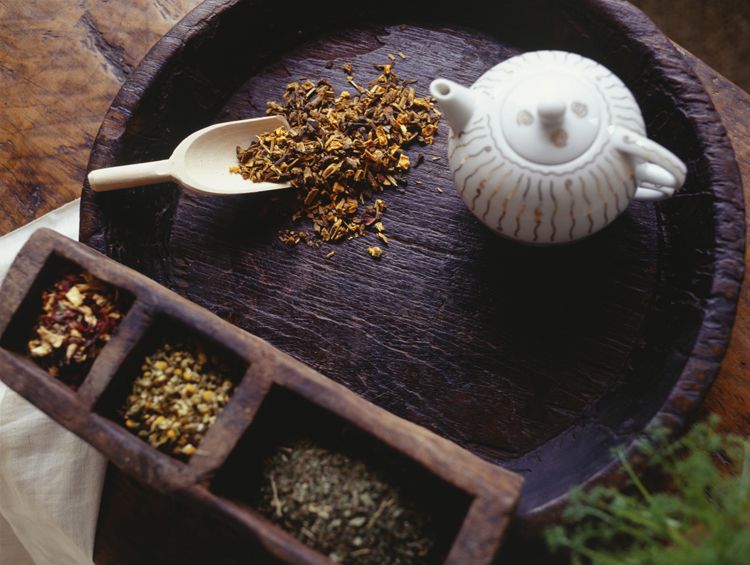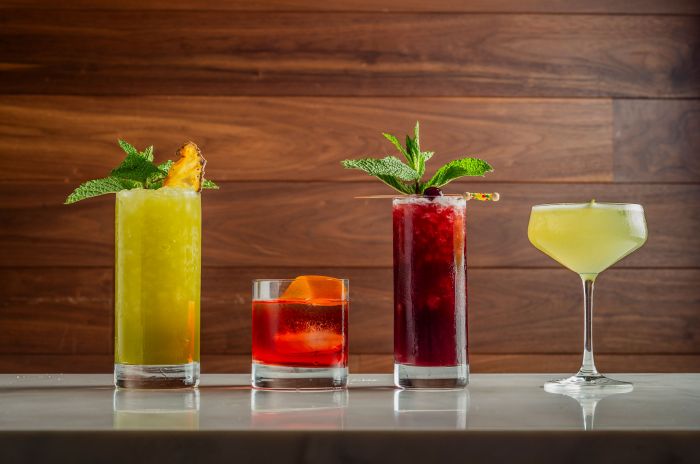
There are hundreds of varieties of teas, so obviously, what is featured below is a wild oversimplification, but these are the most widely known:
Black Tea
Water Temp: 99 °C (210 °F)
Steep: 2-3 minutes
This robust and highly caffeinated tea goes through a heavy oxidation process producing a dark liquor. Black tea is a favorite for export because of its ability to maintain its strong flavor for many years. Popular blends include Indian Assam and Darjeeling.

Green Tea
Water Temp: 99 °C (210 °F)
Steep: 1-2 minutes
Most commonly imported from China, green teas are made from unoxidized leaves that are heated, rolled, and then dried. This tea becomes more popular every day because of its known power to improve greater overall health and beauty.
Oolong
Water Temp: 80-85 °C (176-185 °F)
Steep: 2-3 minutes
Slightly bitter and intended to be brewed strong, the leaves of this popular Chinese tea are first wilted in the sun, then bruised to expose their juices to the air. The medium oxidation process produces a distinct floral flavor that is slightly bitter, but finishes with a sweet aftertaste. (Photo Courtesy of iStockphoto | Thinkstock)

White Tea
Water Temp: 65/71 °C (149-158 °F)
Steep: 1-2 minutes
White teas are unoxidized before curing, wilted, then baked or sun-dried. Known for anti-bacterial properties, white teas are cultivated carefully and known as a “varietal tea”.
Pu’er
Water Temp: 95-100 °C (203-212 °F)
Steep: It’s a matter of taste!
Pu’er leaves are compressed into bricks and aged until they retain a musty, bookish fragrance. They’re valued as a tonic and help aide in digestion; vintage Pu’er is sold for amazingly high prices in China. Many varieties are infused with the fragrance of flowers, such as jasmine. (Photo Courtesy of iStockphoto | Thinkstock)

Maté
Water Temp: 99 °C (210 °F)
Steep: 3–6 minutes
Beloved across South America, native of Portugal and Spain, and widely consumed in Syria and Lebanon. Maté is made of dried, chopped, and ground herbs and steeped heavily. Packed with vitamins A, B, and E, and a wealth of minerals, maté also has more antioxidants than wildly loved green tea, but unlike green tea has no catechins.
Maté is native to South America and was first drank in Paraguay by the indigenous Guaraní people of the region — but the origin of the word is Portuguese (settlers from Portugal migrated to Brazil in the 18th century and were later forced out in exile). Legend goes that the goddess of the moon came to earth immediately to face the wrath of a ferocious jaguar, and was soon saved by an elder. The spiritual Guaraní people were so grateful that they thanked the man by giving him a plant which could be dried and steeped — a “drink of friendship” they called it. So it makes perfect sense that maté, today, is most commonly enjoyed in a social setting. (Photo Courtesy of iStockphoto | Thinkstock)














